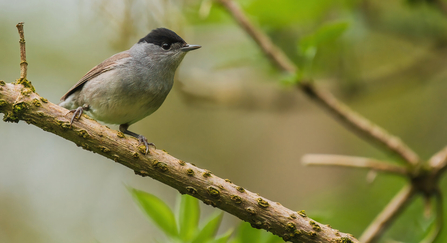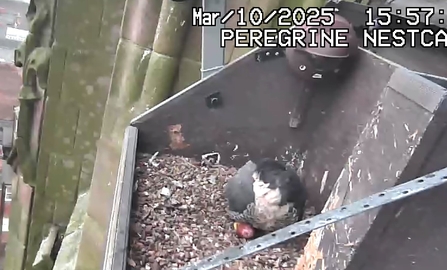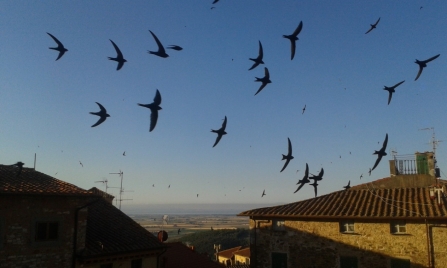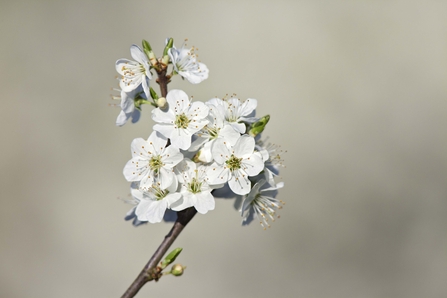Bird news
The blackcap I heard singing in my garden might have been the continental bird which wintered in the UK and was making good use of the fat feeder until a few days ago.
Meanwhile, nesting is underway and birds are collecting moss, horse hair, lichens, twigs etc., depending on the species concerned.
A spoonbill was at Willington, plus the first reed warblers returning there.
A very early hobby was seen in the south, and pied flycatchers were recorded in Padley Gorge.
Swallows are now quite widespread, with smaller numbers of house martins in addition.
I've not seen any reports of cuckoos in this county yet, but no doubt some will show up soon.
Several ospreys have passed through the county, including one seen at Willington Wetlands.
Two sites had garganey, and returning ring ouzels and swallows and sand martins were seen at many places, with a few house martins to boot.
Wild Update - April 2025
©Stefan Johansson

Blackcap - TJELLIS
Peat - some good news
The government has proposed a ban on burning deep peat in the English uplands to protect the environment. The ban would tighten the previous government’s legislation on peat burning by revising the definition of ‘deep peat’ to count anything over 30cm rather than 40cm, and also extending the protections beyond SSSIs. New proposals to ban heather burning on peatland to protect air, water and wildlife - GOV.UK
Cathedral eggs to hatch over Easter?
With luck, after a month of incubation, the four peregrine eggs on a platform high on Derby Cathedral's ancient tower should begin to hatch in the next few days. Keep your eyes on the blog and web cams: Derby Cathedral Peregrine Project - 2025

Captured by Kate via Derby Cathedral Peregrine Project webcam at 3.57pm
Exciting times for Swifts in Derbyshire Dales as big project gets underway!
Last autumn, Derbyshire Swift Conservation was successful in its bid to The National Lottery Heritage Fund (TNLHF) to work on Swift conservation in the Derbyshire Dales District Council's area.
This project will run for two years, funded by TNLHF to the tune of just over £200,000, with additional funding from the Breedon Group.
This will allow us to take on three self-employed people to run the project.
The good news is that Dr. Claire Mead has just been appointed as the Project Coordinator, the main role. She will start work immediately on a part-time basis.
Claire played a big part in the extensive survey work at Rowsley where there is a substantial Swift colony. This will stand her in good stead for the work now starting across the whole district.
If you live in the DDDC area and wish to help by volunteering with survey work, email me and I'll let Claire know.
You can find out a little more about the project and about Derbyshire Swift Conservation, the charity which covers the whole county here: Home - Derbyshire Swift Conservation .

Swifts screaming low over rooftops on a summer evening.
Blackthorn white out
Blackthorn is in blossom now and showing us just how common and widespread this native shrub is. No doubt you have noticed it along road verges and in hedges? It is not much favoured by farmers for use in hedging since it throws out suckers laterally and the bushes spread out into the fields. It forms very dense, spiny thickets which provide great cover for nesting birds and of course the white flowers are a draw for insects.

©Guy Edwardes/2020VISION
See you next month!
Nick
P.S. If you have a garden, do put water out for the birds and any hedgehogs that might be around.
